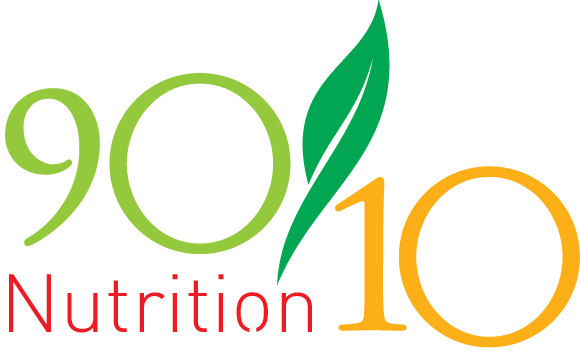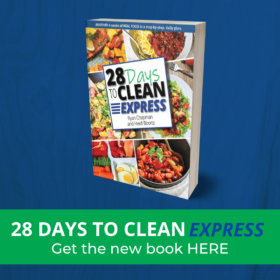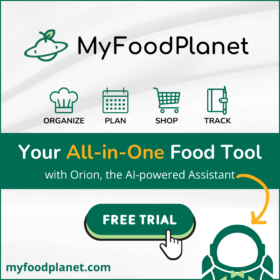Several questions come up frequently when people start clean eating. People usually have the most questions about sweeteners, grains/bread, and drinks. We’ve already written about sweeteners on THIS BLOG POST, we’ve written about bread HERE and HERE, and so now it’s time to tackle drinks with our “Beverage Guide”.
There are many questions that come up in regards to beverages in our challenge groups, but here are the most common ones we see:
➡️ How much water do I need to be drinking every day?
➡️ Do I have to drink just plain water?
➡️ What else can I drink?
➡️ Is coffee ok to drink?
➡️ What about tea?
➡️ Can I still drink diet soda if it has no calories?
➡️ I hear wine is good for you, so can I have wine?
➡️ Do I have to give up beer to do this diet?
➡️ Can I drink sparkling water instead of regular water?
➡️ Does only plain water count toward my total water intake?
These are all excellent questions and I’ll try to cover ALL of them in this article. I’m going to tackle a few of them right now and then I’ll go into a list and description of different beverages and what tier they fall on in 90/10. That should cover the rest of the questions in pieces and give you sound recommendations for what to drink.
How Much Water Do You Need?
This can be a frustrating subject for many people. There are quite a few recommendations out there that are just plain discouraging. The two most common recommendations I see are either to drink 8 glasses of water a day (8 ounces each) OR to drink half your body weight in ounces every day. So, if you weigh 200 lbs, you should drink 100 ounces of water. I’ve also seen recommendations to drink your full body weight in ounces every day (200 ounces for a 200 lb person). 😲
In my opinion, these recommendations can cause unnecessary stress both mentally and physically. If you’re chugging water to try to reach that 100 ounce goal and you’re actually not thirsty, it causes your body to deal with that water when it doesn’t actually need it. Excessive water intake around meals also dilutes stomach acid and makes digestion more difficult.
Here’s the bottom line: Water intake recommendations are intended to help people increase water intake. That’s a good thing, but it can become a bad thing when you are trying to reach some goal that really has no sound scientific backing. My recommendation is to drink “plenty” of good old plain water in between meals and only sip during meals (for digestion). Room temperature is best but not required. Just drink water regularly and listen to your body for thirst. Aim to make drinking water between meals a regular part of your day instead of other beverages and you should get plenty.
Does Only Plain Water Count?
Short answer: NO. Everything counts.
This goes along with the question of how much water you need to drink. Another reason I am not fond of water intake goals is because it doesn’t take into account the water you get from food. The water you get from food, because it is taken in with so many other nutrients, can often be absorbed and used by the body even easier than your drinking water.
Often times, when a person is trying to increase water intake, they are ALSO trying to eat better. This almost always results in more water intake from fruits and vegetables.
So, again, the recommendation is to drink “plenty” of water (see the section below for options) in addition to the water you get from food and listen to your body for thirst.
BEVERAGE GUIDE
Green Tier Beverages
Green tier beverages should make up the bulk of your drink intake.
Water
Water is always going to be the first beverage choice. It’s essential for life! I’ve already covered the questions about how much to drink and what counts toward your water intake above. Now, the next question: Do you have to drink only plain water?
No! You can infuse your water with fruit if you wish. Fruit infused water is still green tier. That includes just squeezing some lemon or lime in your water, or using an infuser bottle (like THIS ONE) to infuse your water with things like cucumber, strawberries, pineapple and various other fresh fruits.
There is one brand of fruit infused water on the market that seems pretty good and we would consider green tier and that is HINT water. You can check it out HERE.
I cover sparkling water in another entry below.
Tea
Tea is acceptable as a green tier beverage.
Now, this does NOT include sweet tea for all you from the south! We’re referring to just tea simply brewed from tea leaves or herbal tea.
Herbal (caffeine free) tea would be the healthiest choice, but caffeinated tea is also acceptable. Just stay away from decaffeinated teas that are processed to remove the caffeine. If you want caffeine free tea, use herbal tea that is naturally free of caffeine.
Coffee
Coffee is acceptable as a green tier beverage.
This does NOT include that venti mocha with whip cream you had last week. 😁 Black coffee is green tier. All additives have to be evaluated separately. Most common additives to coffee are either yellow or red tier.
Caution: As with tea, stay away from decaffeinated coffee as the process to remove the caffeine is harsh. Try herbal teas and herbal coffee substitutes if you want coffee flavor without the caffeine. Also, watch out for artificial flavoring in those specialty flavored coffee blends.
Common yellow tier additives for coffee include half and half and honey. Stevia drops are green tier (watch out for those stevia products like Truvia). Some people enjoy coconut milk or unsweetened almond milk (both can be green tier depending on ingredients) in their coffee.
Sparkling Water
A lot of people have turned to sparkling waters like La Croix and Perrier to replace their diet soda addiction.
We consider sparkling water to be green tier as long as it is just sparkling water (water with CO2) and natural flavors. Watch out for artificial flavors, sweeteners, or other junk.
If you have an issue with diet soda or regular soda, this could be a healthier alternative, but your main drink should still be regular water!
If you do have an issue with soda, check out this blog.
Fruit Juice
Fruit juice is one that we’ve wrestled with many times. While it’s a natural thing directly from fruit, the pasteurized, concentrated, and filtered versions often sold in bottles can be like drinking a candy bar.
It’s always best to just eat fruit rather than drink fruit juice because you get the fiber and everything in the best form for your body to use it. However, we do consider 100% fruit juice, not from concentrate to be green tier.
Best case is just eating fruit, next is fresh squeezed juice right from the fruit, next is 100% juice (not from concentrate). Juice from concentrate is yellow tier.
Dairy Milk
Although dairy milk is green tier, there are some cautions I’ll give in regards to the use of dairy milk.
🥛 We don’t typically use dairy milk as a beverage. It’s an ingredient in recipes for us mostly. All of the hype about needing the calcium in milk for strong bones has been debunked. There are far greater sources of calcium than milk so don’t drink it because you think you need it.
🥛 If you do drink milk, go for higher fat versions and not the skim milk. It has a higher concentration of lactose (the natural sugar found in milk) and no fat to help it absorb properly. Stick with whole milk.
Unsweetened Alternative Milks
As with dairy milk we don’t typically use these milks as a beverage. It’s an ingredient in recipes for us mostly.
Alternative Dairy Milks can include rice milk (made from brown rice only), almond milk, cashew milk, soy milk, and coconut milk.
NOTE: You MUST be careful with alternative milks and read ingredients. It must be unsweetened to be green tier. Often, carton milks will use the term “beverage” at the end because they aren’t just almond milk or coconut milk. We buy coconut milk in a can, often make our own almond milk, and otherwise watch ingredients very carefully.
Yellow Tier Beverages
Yellow tier beverages can be part of your “10% allowance”. For more on how our tiers work, you can visit THIS PAGE.
Wine
Despite consistent lobbying from many members and internal partners, wine remains on the yellow tier. Ha!
Of course, that means that you can still have some wine, in moderation.
Of all the yellow tier beverages, wine does have the most health benefits as it is known to have antioxidant power. Red wine has the most health benefits, but even white wine has some antioxidants. However, it should still be used within the 10% allowance of the yellow tier.
You can see a more comprehensive blog on alcohol HERE.
Beer
Beer is a yellow tier beverage.
Although it is one of my personal favorite indulgences, it needs to be moderated by the yellow tier allowance as much or more than wine does.
You can see a more comprehensive blog on alcohol HERE.
Hard Liquor
Hard liquors such as tequila and vodka go on the yellow tier as well.
This does NOT include any mixers you may add to them. You have to evaluate those separately. Fruit juice added would be either green or yellow tier, while soda would be red tier.
You can see a more comprehensive blog on alcohol HERE.
Red Tier Beverages
Red tier beverages are those that should be avoided except maybe on special occasions (your choice). In any case, they should NOT be a regular part of your diet. For more on how our tiers work, you can visit THIS PAGE.
Soda
Whether you call it “soda” or “pop”, whether it’s diet or regular, it goes on the red tier!
I’m singling out soda here as a separate entry because it is so prevalent but anything with added refined sugar or artificial sweeteners is red tier (see below).
You can see a more comprehensive blog on soda HERE.
Energy Drinks
Monster, Rockstar, Mt. Dew, etc.
I’m singling out energy drinks here as a separate entry as well because they are so prevalent but anything with added refined sugar or artificial sweeteners is red tier.
Sugared or Artificially Sweetened Beverages
Although I specifically mentioned soda and energy drinks, there are MANY more red tier beverages available.
Essentially, if it has added refined sugar or artificial sweeteners, it is red tier. This includes healthy sounding waters like Vitamin Water that can sweetened with sugar or Splenda. If you read the ingredients and it has any form of sugar or an artificial sweetener, it is red tier.
You can visit our searchable tiers anytime to search by keyword if you aren’t sure.



Comments (2)
Love this!
Good article covering beverages. Thank you!